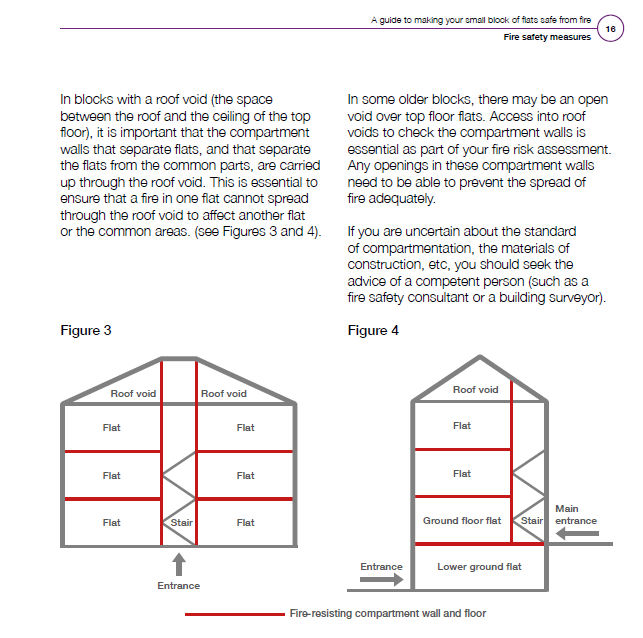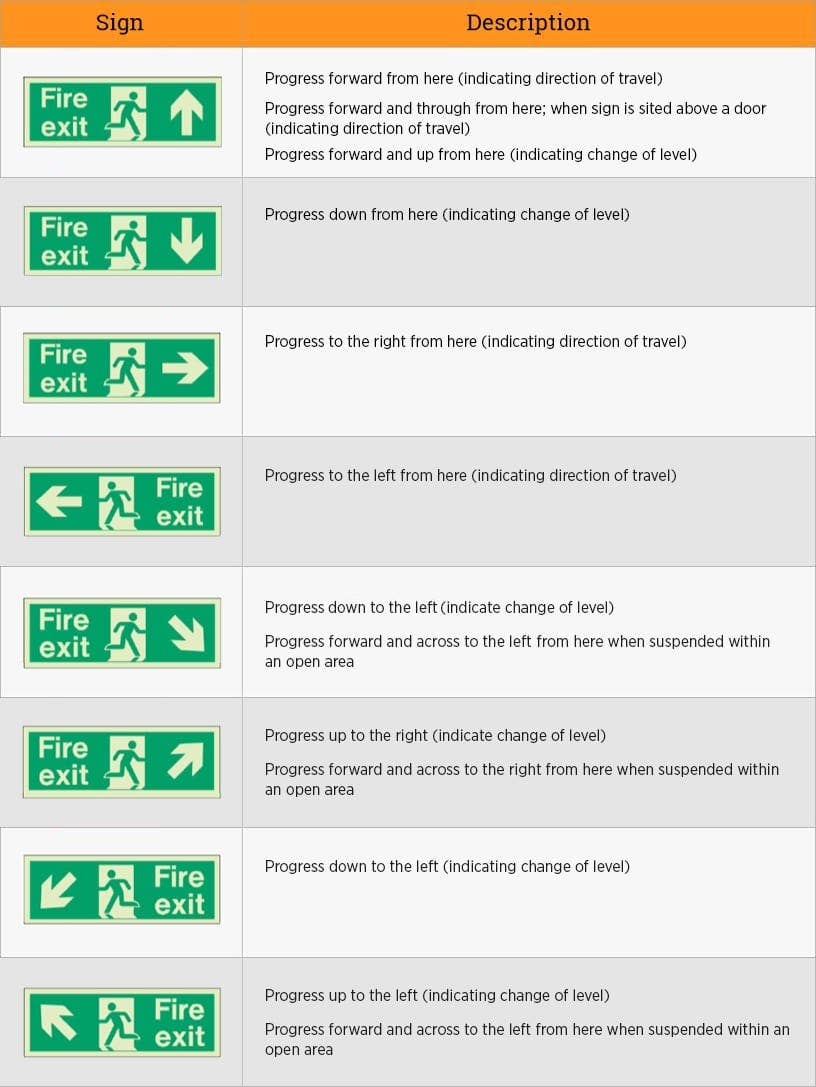-
Posts
2,310 -
Joined
-
Last visited
Posts posted by AnthonyB
-
-
The external walls and arguably the landing do come under the Order
-
10 hours ago, Mike North said:
For an additional cost of £320 per door I would change the doors. If they are the original doors, you have had your moneys worth out of them.
£200,000 / 64 is over £3000 per door. That's a lot of money to most people.
-
Not for an existing legacy building - sound, well constructed and close-fitting conventional doors suffice under the current guidance (HOUSING – FIRE SAFETY Guidance on fire safety provisions for certain types of existing housing).
The Fire Safety Order would primarily apply to this block in respect to the external walls only and regardless of the layout doesn't apply to the interior of dwellings -
A decent fire risk assessment would advise. The official Government Guidance (which if you follow is now proof of compliance following the strengthening of the legal status of the guides)
Depending on the height and layout of the block the guidance allows the use of original doors (to a suitable minimum standard), original doors with modernisation (adding intumescent strips and cold smoke seals), or in some situations requires modern FD30S doorsets.
-
Usually small places of assembly, due to the public presence, need at least a Category M fire alarm system of call points and sounders although if very small you could use the argument for small workplaces on one level where if a shout of fire can clearly be heard throughout that suffices.
If the flats have the 60 minutes separation & separate access there would be no need for an alarm in the restaurant for their benefit either (unless it's a block with unsatisfactory cladding with a temporary evacuate policy) -
In theory yes if required, the travel into an adjoining compartment helps reset the travel distance clock as well similar to reaching a storey exit.
-
I think this has already been answered elsewhere on this forum?
-
A couple of q's:
- Are they different fire compartments?
- Are they part of the same occupancy?
-
In which case yes to both as per paragraph 22.2(c) of BS5839-1:2017
-
You are better asking at the forum at firealarmengineers.com (manuals are on here too)
It will be a Morley ZXe panel, but as a Chubb badged version usually has a different engineer access code.
Software is apparently old MS-DOS based Fire 3, 4 or 5 unless it's one that has had new firmware to Fire 6The manual shows you can programme text, etc, from the front end in Level 3.
-
Their main purpose is to provide smoke control, particularly on longer corridors, so they need to be suitably smoke sealing. Just because they are 40 years old doesn't in itself mean they are no good and can't be remediated - I work with several schools with large legacy estates and lots of doors (many of which in schools don't actually need to be fire doors) and if they had to automatically replace every door set in one fell swoop they'd go bust.
A good FRA will detail which doors are a priority, which doors need to even be fire doors under schools fire safety guidance and a good fire door contractor will be able to remediate doors depending on the nature of the issues rather than take a pass/fail/whole new doorset required limited approach many who have entered the trade in the last few years are constrained to. -
Or put a new second final exit in the outer wall of the event space unit? Evacuating a public place of assembly through a workshop area is a non starter.
-
What category is the system intended to meet?
-
On 16/06/2023 at 09:53, Guest Sarah said:
HiI,
Do fire doors with mainly glass in them have to be renewed? It’s in a school and we have been told it doesn’t meet the standards required as the doors are 40years old. Also can draft excluders at the bottom of the door be used to reduce the gap?
Are these cross corridor doors or enclosing stairs?
-
-
As above - technically it doesn't meet British Standards recommendations but unless it is likely to cause confusion and delay prompt escape it would not be a breach of the legislation.
-
No, not if it traps people and stops them exiting a building - it needs to have an escape fastening not requiring a key from the inside - the Safelincs website has a variety of options for sale.
-
It should be a heat detector NOT a smoke (unless the solar gear is in a separate room or large cupboard in the garage where you could fit a smoke without cars setting it off) . Your garage ,if directly connected to the house, should have a fire door and fire resistant walls anyway so the difference in response time between a heat and a smoke shouldn't be critical
-
If it's purpose built flats then it wouldn't need the alarm in the first place and if it did need a full evacuate strategy for some reason and thus an alarm system these would be wholly inadequate.
As you would know BS5939-6 makes it clear that for Grade D systems there is no service requirement other than in sheltered housing or other systems where the detectors are linked to a telecare system, only monthly testing, so it doesn't need certifying for anything (in fact it should come out).
It's worrying that the Fire Risk Assessment hasn't highlighted this. -
-
Ladders are not usually accepted as escape routes - what type of premises are we talking about, what area would be served by the ladder and how many would be expected to use it?
-
It reads that way it seems, yes
-
It's quite clear in Table B1 to the 2020 edition of the Technical Guidance Document B to the Building Regulations 2006, the doors is required to be to Classification E30 Sa as defined in I.S. EN 1634-3: 2004 as restricted smoke leakage at ambient temperatures is needed. (In the UK this would be known as a FD30S door)
-
Is this a post 1991 build or approved conversion?




Final fire exit sign, over door.
in Fire Risk Assessments
Posted
I'm afraid the last poster is out of date - arrows even for final exits became mandatory in all the exit signage standards many years ago with the BS/ISO signage.

As you are passing straight on through the door the arrow should point upwards in accordance with the signage standards for use of arrows although a down arrow on an existing sign is unlikely to cause confusion so unless you want to be pedantic there is no need to rush to change them.